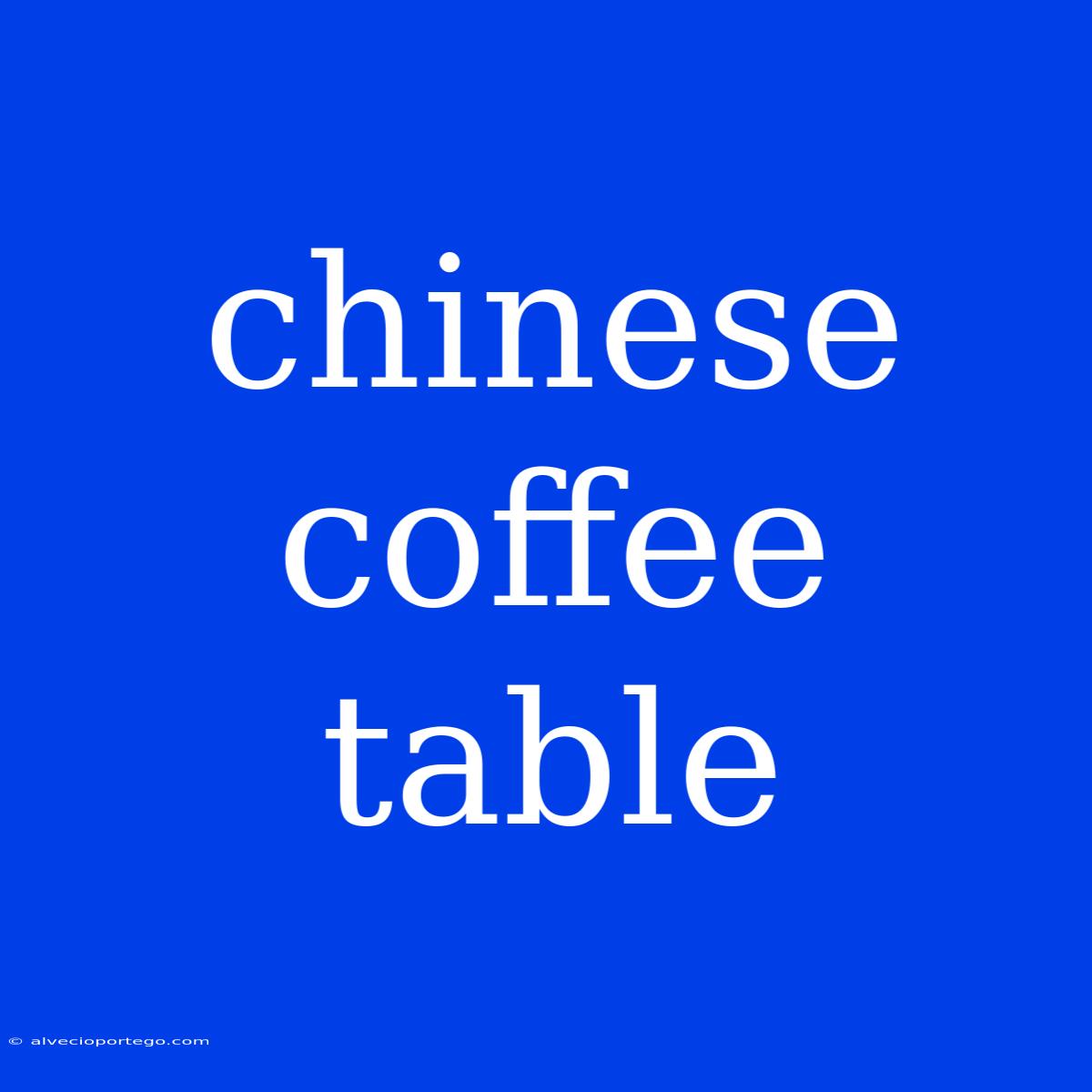A Journey Through Time: Exploring the Allure of Chinese Coffee Tables
Coffee tables, those essential pieces of furniture in living rooms around the globe, hold a unique story in China. Their history intertwines with the evolution of Chinese aesthetics and the influence of cultural exchange. While the modern concept of a coffee table is relatively recent, the foundations for this versatile piece lie in China's rich furniture history.
From Ancient Dynasties to the Modern Day: A Tale of Evolution
Ancient roots: In ancient China, the concept of a dedicated "coffee table" didn't exist. However, low tables used for various purposes served as their predecessors. These were crafted from materials like wood, bamboo, and stone, often adorned with intricate carvings and lacquered finishes.
Ming Dynasty (1368-1644): This era saw the emergence of "cha table" (茶桌), specifically designed for tea ceremonies. These tables were smaller, more elegant, and often featured exquisite craftsmanship, reflecting the sophistication of the time.
Qing Dynasty (1644-1912): During this period, "kang tables" (炕桌) gained popularity. These tables, placed atop heated platforms called "kang," served as a central gathering spot for families. They were often crafted from precious woods like rosewood and lacquered with intricate designs.
The Influence of the West: With the opening of China to the West, the concept of a "coffee table" as we know it began to take root. The introduction of coffee as a beverage in the late 19th century spurred the need for a surface to hold cups and refreshments.
Contemporary Chinese Coffee Tables: A Fusion of Tradition and Modernity
Today, Chinese coffee tables showcase a fascinating blend of heritage and contemporary design.
Materials and Craftsmanship: From exquisite hardwoods like mahogany and rosewood to modern materials like metal and glass, Chinese coffee tables offer a diverse range of materials. Skilled artisans continue to handcraft pieces with traditional techniques, ensuring both durability and artistry.
Design Elements: Traditional motifs like dragons, phoenixes, and floral patterns are often incorporated into modern designs, creating a unique and timeless aesthetic. Geometric designs and abstract patterns add a touch of contemporary flair, making these tables a perfect complement to modern interiors.
Functionality and Versatility: Chinese coffee tables come in various shapes, sizes, and styles, allowing for customization to suit individual needs and spaces. They can serve as focal points in living rooms, offering a surface for display, drinks, or even work.
A Timeless Symbol of Hospitality and Cultural Heritage
Beyond their practical function, Chinese coffee tables embody a sense of hospitality and shared experience. They offer a space for conversation, enjoyment, and cultural exchange.
In conclusion, Chinese coffee tables are more than just furniture; they are tangible reflections of a rich cultural heritage, blending tradition with contemporary aesthetics. Their evolution tells a fascinating story of changing tastes and societal influences, making them not just beautiful pieces, but also windows into China's past and present.

